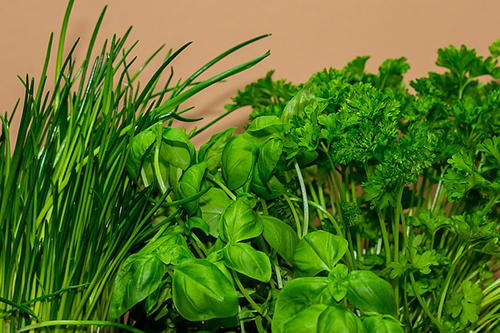How:
Follow the 1/3 rule when harvesting herbs; make sure to only take 1/3 of the plant each time you harvest. Most herbs should be harvested before flowering, to preserve its unique flavors.
When:
Basil – Once the plant reaches 6 – 8” in height
Chives – Harvest once the leaves are thick
Cilantro – Once stems are 6 – 12” long
Lavender – Harvest flower just before full bloom
Lemon Balm – Any time
Oregano – Sprigs may be harvested once the plant reaches 3 – 4” tall (best in mid-summer)
Parsley – Any time
Peppermint – Any time (best before flowering)
Rosemary – Any time
Sage – Harvest only lightly during the first year of growth. Second growing season and thereafter, harvest any time year-round.
Tarragon – Any time
Thyme –Any time (best before flowering)
Where:
Leafy annual herbs (basil) are to be pinched at the tips of the stems, gathering several leaves at a time. Longer stemmed herbs (cilantro, parsley, lavender, rosemary) should be cut near the base of the branch. Leafy perennial herbs (oregano, thyme, sage, tarragon) are to be harvested by the stem in sprigs.

Options for Drying Herbs:
- Bundle herbs together and hang with garden twine to air dry. The process typically takes two weeks.
- Use a Dehydrator machine
- Dry herbs in a Microwave
- Heat dry herbs in a car during the summer. The higher temperatures will speed up the drying temperatures. Place herbs on a try in the car window.
Freezing Herbs:
- Freeze individual leaves in airtight containers or bags
- Freeze leaves in ice cubes using either water or oil
Culinary Preservation:
- Add fresh herbs to olive oil, butters or soft cheese
- Preserve herbs in vinegars
- Preserve herbs in jars layered with salt or sugar
For a refreshing use of fresh herbs, watch the video below on herb-infused water recipes.